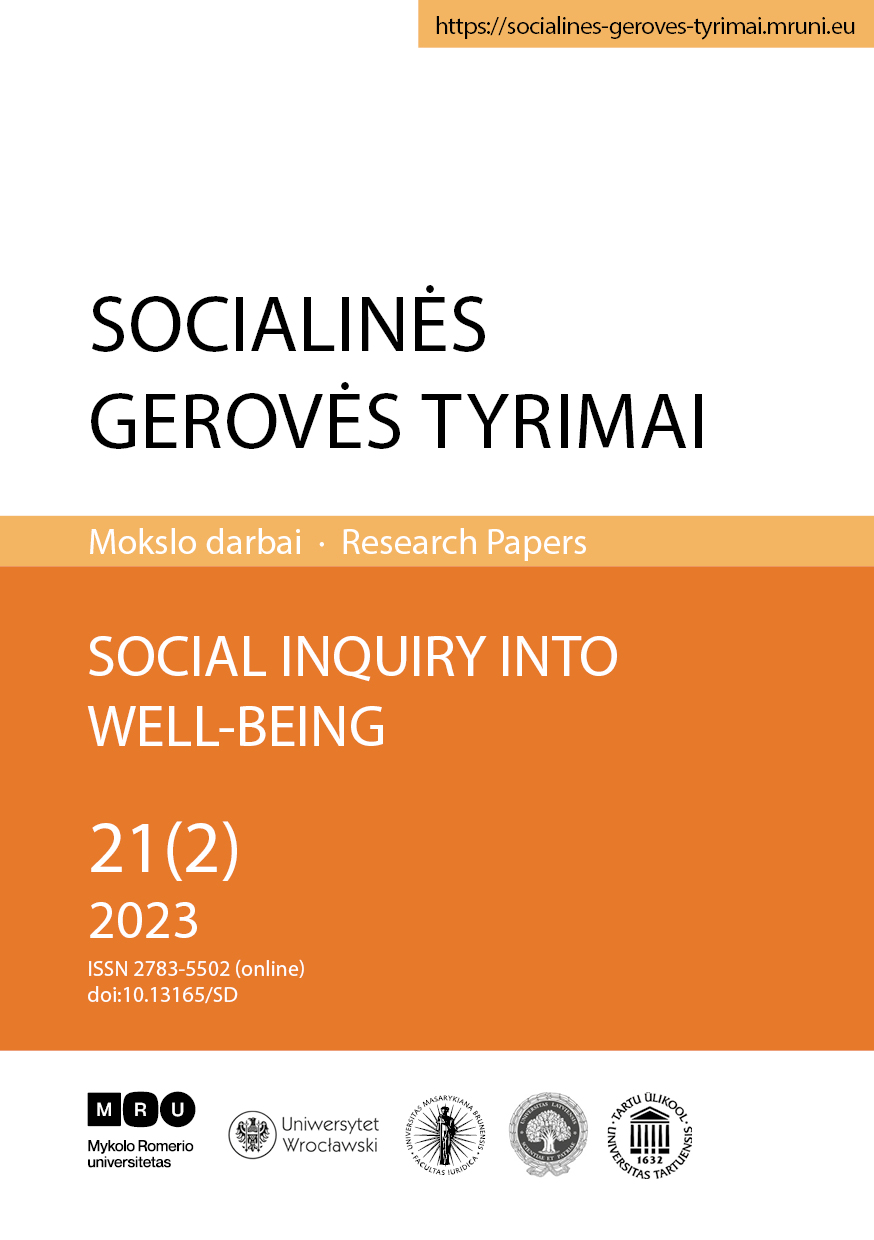THE RELATIONSHIPS BETWEEN GENDER IDENTITY, LONELINESS, AND BODY DISSATISFACTION AMONG ADOLESCENTS
plugins.themes.bootstrap3.article.main69400a61c950e
Santrauka
Identity formation is an important developmental process during adolescence. The interplay between adolescents’ gender identity, loneliness, and body dissatisfaction is a complex and multifaceted phenomenon. Adolescen gender identity issues are thought to be related to loneliness, and body dissatisfaction is a risk factor for greater loneliness. It can be hypothesized that adolescents experiencing gender identity issues could feel lonelier when they have greater body dissatisfaction. The present study addresses the following two research questions: (1) Are adolescents’ (both girls and boys) gender identities associated with loneliness, body dissatisfaction, and fear of negative appearance evaluation? (2) Does body dissatisfaction and fear of negative appearance evaluation mediate between adolescents’ gender identity and loneliness, and does this differ for girls and boys? The sample consists of 211 adolescents (54.5% girls) aged 15–17 (Mage = 16.20) from five secondary schools in Vilnius. Adolescent gender identity was measured using the Gender Identity/Gender Dysphoria Questionnaire for Adolescents and Adults (GIDYQ-AA); body dissatisfaction was established using the Body Shape Questionnaire (BSQ); loneliness was established using the UCLA Loneliness Scale; and apprehension regarding appearance evaluation was established using the Fear of Negative Appearance Evaluation Scale (FNAES). The results show that the gender identity of both girls and boys is negatively related to loneliness, body dissatisfaction, and fear of negative appearance evaluation. The results also revealed that the association between gender identity and loneliness was mediated by body dissatisfaction, and that the association between body dissatisfaction and loneliness was stronger for boys than for girls. However, fear of negative appearance evaluation does not mediate the association between gender identity and loneliness. These results illustrate the importance of examining adolescents’ gender differences regarding body dissatisfaction, loneliness, and gender identity, especially the experiences of boys regarding body dissatisfaction.
plugins.themes.bootstrap3.article.details69400a61cdecd
Šiam žurnalui suteikta Creative Commons Priskyrimas - Nekomercinis platinimas - Jokių išvestinių darbų 4.0 Unported licencija.
Autorių teisės ir leidybos teisės priklauso Mykolo Romerio universitetui.








